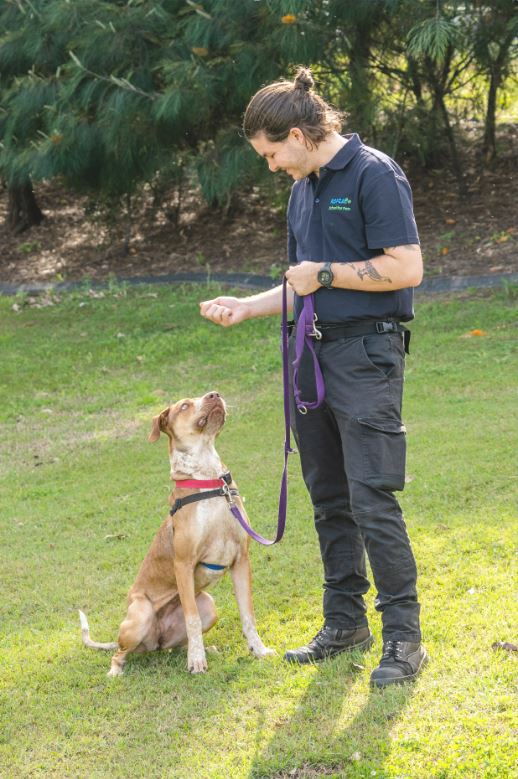Imagine the scene: You’re out enjoying a walk when your dog spots Fluffy from down the street. Suddenly your dog starts pulling, lunging and barking and you’re barely able to hold on to the lead. This may be a scenario you’re all too familiar with..
There are multiple reasons why dogs can be reactive on lead:
It’s important to try and see the situation from your dog’s point of view. You might not consider Fluffy from number 6 to be a threat, but your dog might. Walking our dogs on lead also means that they have very limited options available to them. Have you heard of the fight or flight response? The lead is a restraint and it means that your dog is unable to get away from something they might see as scary.
Many dogs get frustrated by the lead holding them back from where they want to go, especially if they're used to playing with dogs off lead or have never been taught to walk calmly on lead. This frustration can trigger a ‘reaction’ when they see other dogs.
If your dog has had a bad experience with another dog while on lead, they may start to predict that the next experience will also be a bad one. This happens to humans too, just think about your last visit to the dentist!

First of all, it’s important to figure out how close another dog can be before your dog starts to react. A few meters further away, while your dog is still comfortable and taking food treats, should be your starting point.
As soon as your dog notices another dog in the distance, start feeding a steady stream of treats either by hand or on the ground. You may need to cross the road or change direction to help prevent your dog from becoming overwhelmed. Stop delivering treats as soon as the other dog has disappeared from sight. This process will help your dog to associate dogs with good things.
Watch your dog closely. If you notice any signs of distress continue to deliver the treats but move further away from the situation as quickly as you can. Next time increase the distance from the other dog before you begin.
Our Reactive Rover course is a 7 week long program designed to help clients and their reactive dogs. We also offer one-on-one training sessions in your own environment to assist you with your specific needs.
Book into our specialised reactivity course today!